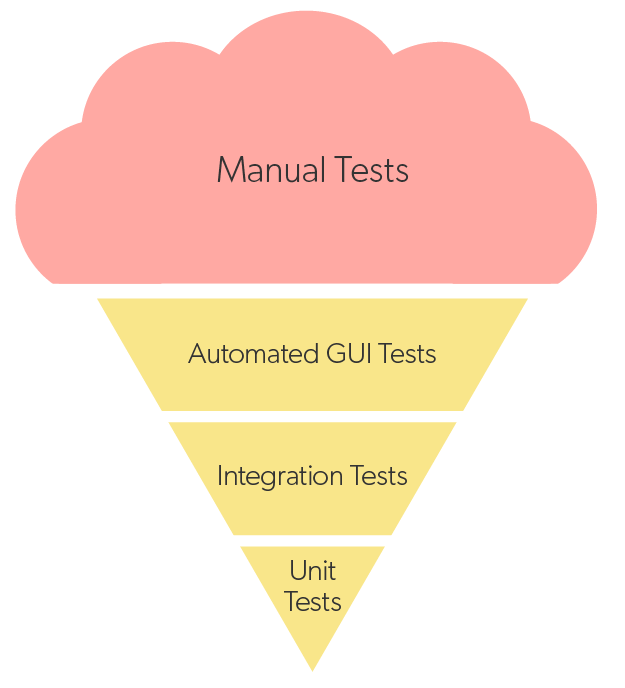Designing Tests for CD
2 minute read
There are common patterns to show how much of each kind of test is generally recommended. The most used are the Test Pyramid and the Test Trophy. Both are trying to communicate the same thing: design a test suite that is fast, gives you confidence, and is not more expensive to maintain than the value it brings.
Testing Principles
- Balance cost and confidence
- Move failure detection as close to the developer as possible
- Increase the speed of feedback
- CI to take less than 10 minutes.
Recommended Test Pattern
Most of the tests are integration tests and emphasize maximizing deterministic test coverage in process with the development cycle, so developers can find errors sooner. E2E & functional tests should primarily focus on happy/critical path and tests that absolutely require a browser/app.
When executing continuous delivery, test code is a first class citizen that requires as much design and maintenance as production code. Flakey tests undermine confidence and should be terminated with extreme prejudice.
Testing Matrix
| Feature | Static | Unit | Integration | Functional | Visual Regression | Contract | E2E |
|---|---|---|---|---|---|---|---|
| Deterministic | Yes | Yes | Yes | Yes | Yes | No | No |
| PR Verify, Trunk Verify | Yes | Yes | Yes | Yes | Yes | No | No |
| Break Build | Yes | Yes | Yes | Yes | Yes | No | No |
| Test Doubles | Yes | Yes | Yes | Yes | Yes | See Definition | No |
| Network Access | No | No | localhost only | localhost only | No | Yes | Yes |
| File System Access | No | No | No | No | No | No | Yes |
| Database | No | No | localhost only | localhost only | No | Yes | Yes |
Testing Anti-patterns
“Ice cream cone testing” is the anti-pattern where the most expensive, fragile, non-deterministic tests are prioritized over faster and less expensive deterministic tests because it “feels” right.
Google Test Blog: Just Say No to More End-to-End Tests

Testing Best Practices
General testing best practices are documented here. Best practices specific to test types are documented within each test type page.